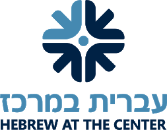Hanukkah: From Scarcity to Abundance
December 18, 2020 by
One of the core Talmudic debates of Hanukkah – emblematic of the productive argumentation between Hillel and Shammai that shapes our tradition – is the question of how one should light the hanukkiah. Do we begin with eight candles to represent the resources that diminish over the holiday OR do we begin with one candle and build up to eight?
Shabbat 21b
אָמַר רַבָּה בַּר בַּר חָנָה אָמַר רַבִּי יוֹחָנָן: שְׁנֵי זְקֵנִים הָיוּ בְּצַיְדָּן. אֶחָד עָשָׂה כְּבֵית שַׁמַּאי וְאֶחָד עָשָׂה כְּדִבְרֵי בֵּית הִלֵּל. זֶה נוֹתֵן טַעַם לִדְבָרָיו כְּנֶגֶד פָּרֵי הַחַג, וְזֶה נוֹתֵן טַעַם לִדְבָרָיו דְּמַעֲלִין בַּקֹּדֶשׁ וְאֵין מוֹרִידִין.
Rabba bar bar Ḥana said that Rabbi Yoḥanan said: There were two Elders in Sidon, and one of them acted in accordance with the opinion of Beit Shammai, and one of them acted in accordance with the opinion of Beit Hillel. Each provided a reason for his actions: One gave a reason for his actions: The number of lights corresponds to the bulls of the Festival. And one gave a reason for his actions: The number of lights is based on the principle: One elevates to a higher level in matters of sanctity and one does not downgrade.
In this and related texts that our third graders studied recently, Hillel’s argument, which seems so natural to us now, is not actually the logical one. Jewish holidays are experiential in nature. We love to reenact history (and collective trauma, too) to feel as if we were present with our ancestors. Shammai’s approach seems more aligned with a reenactment of our ancestral experience and mythology around Hanukkah. And yet, Hillel’s argument for ‘raising up holiness’ as the holiday wanes, is the default practice for most of us.
Hillel’s reframe, to my mind, is fundamentally about shifting from a mindset of scarcity to one of abundance. Each night, even as resources dwindle, the miracle increases. And the collective memory of that miracle – and the hope and light that it continues to bring us – exists long after the resources have run out.
It is easy and often logical, especially in 2020, to look at our lives through the frame of diminishing resources. We are running out of patience, out of creative activities for the kids, out of dinner ideas – or perhaps those are already long gone in your household! Our light feels like it is waning; we have a bit less of it each day.
But Hillel’s approach reminds us that we actually build more light from the ways that we have stretched ourselves and our resources, even as those dwindle. Last night, as we tried to piece together enough unbroken candles from the dregs of the almost empty boxes (and the worst colors, to boot!), we had a choice to bemoan the scarcity of this year or embrace our imperfect abundance.
Hanukkah – and particularly this eighth miraculous day – pushes us to acknowledge the darkness but focus on the light, to choose a mindset of abundance over scarcity. And at MILTON we hope to follow that model through this tough winter. The constraints are great at home and school right now and we cannot will that away just by looking for silver linings. But as we stretch our collective resources and imaginations to open our campuses each day, I have been amazed by the way our community chooses to focus on our abundance and the miracle that is each and every day of pandemic-era school. Our students are the best models of this, thrilled to be at school rather than having a snow day, (almost) never complaining about wearing a mask and taking new structures and protocols in stride.
So let’s light up this eighth day (for which Hillel prescribed the full hanukkiah) with gratitude to our health team, staff, faculty, students, board, parents and supporters for making yet another Miracle on 16th Street.
Hag Urim Sameah and Shabbat Shalom!






